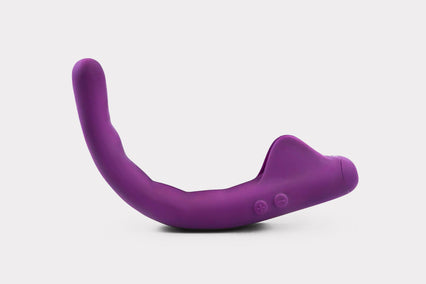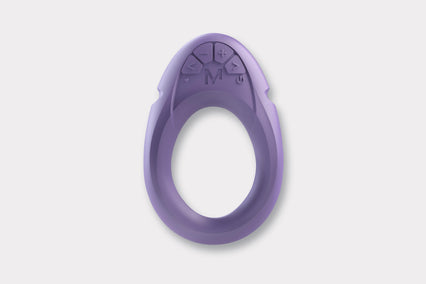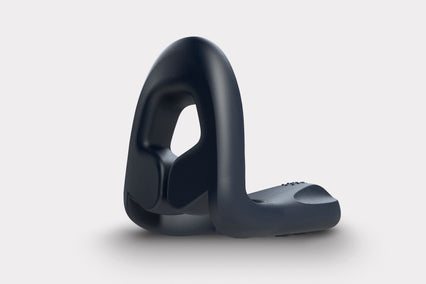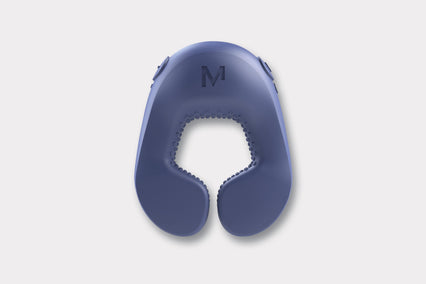Erectile dysfunction (ED) is common at any age. While many people think of it as a sexual issue, ED can also point to something bigger happening in the body. Sometimes it signals an underlying condition or is part of a chronic condition that needs ongoing care.
ED rarely has a single cause. Stress and day-to-day habits matter, but so do issues that affect the heart and blood vessels, hormones and metabolism, the brain and nerves, the prostate and pelvic area, and mental health. Even if you’re already managing something like diabetes or high blood pressure, ED may still need attention as part of your care plan.
Let’s explore some of the most common health conditions linked to ED and ways to improve ED if you're living with these conditions.
1. Cardiovascular issues
Erections need steady blood flow. When the heart and blood vessels aren’t working well, less blood reaches the penis, and erections can become less firm or less reliable. Common cardiovascular problems linked with ED include:
- Heart disease (coronary artery disease): Plaque narrows the heart’s arteries, reducing overall circulation. ED can show up alongside, or even before, chest symptoms, which studies have found in men later diagnosed with heart disease.
- Atherosclerosis: Plaque build-up that hardens and narrows arteries throughout the body, including the small penile arteries that are often affected early. Studies show that atherosclerosis can affect erectile function.
- High blood pressure (hypertension): Over time, elevated pressure damages the lining of blood vessels and makes them less flexible, limiting the blood flow needed for an erection. Research supports that there is a link between high blood pressure and ED.
- High cholesterol (dyslipidemia): Excess LDL and other lipid changes speed plaque build-up in arteries, which can hinder the blood flow needed for an erection.
- Peripheral artery disease (PAD): Narrowed leg arteries usually signal widespread artery disease elsewhere. PAD and ED commonly appear together because both reflect poor circulation. Studies show that atherosclerosis can affect erectile function in men.
These conditions all affect circulation, which is central to getting and keeping an erection. ED isn’t only a bedroom issue, studies have shown that ED can be a warning sign that deserves a heart-health check, blood pressure, cholesterol, blood sugar, and overall risk. Trouble with erections can show up before heart symptoms because penile arteries are smaller and can be affected earlier, so many doctors recommend a check-up when ED is new or getting worse.
2. Hormonal or metabolic issues
Hormones and metabolism help your body start and keep erections. When they’re out of balance, nerves, blood flow, and sexual desire can all be affected. Common hormonal or metabolic problems linked with ED include:
- Diabetes: High blood sugar can harm the blood vessels and nerves that support erections. Studies support that ED is common in men with diabetes and can show up earlier or be more persistent.
- Obesity: Extra weight, especially around the middle, can disrupt hormones and strain blood vessels, which is why studies often find higher rates of ED in men with obesity.
- Low testosterone: When testosterone is low, sex drive can dip, and erections can be less dependable. Studies confirm that low T can contribute to ED.
- Thyroid problems (hypo- or hyperthyroidism): Thyroid hormones affect energy, mood, and sexual response. Studies show that both low thyroid (often from autoimmune thyroiditis) and high thyroid (often from Graves’ disease) are linked with ED.
- High prolactin (hyperprolactinemia): Men make prolactin, too, not just pregnant or breastfeeding women. When it’s high, often from a small pituitary tumor or from certain prescription medicines, it can affect erections.
- Metabolic syndrome: A cluster of risks - larger waistline, higher blood pressure, elevated blood sugar, and abnormal cholesterol levels - that often shows up alongside ED. Research shows men with metabolic syndrome are more likely to experience erection problems because these factors all affect circulation and hormone balance.
Problems like diabetes, obesity, or hormone/thyroid imbalances don’t just affect energy and mood; they can also dull the nerve signals and blood flow that support erections. If you have one of these issues, it’s worth flagging at your next doctor’s visit so basics like blood sugar and key hormones can be checked.
3. Neurological conditions
Erections start in the brain and travel through nerves down the spinal cord to the penis. When those signals are disrupted by disease or injury, getting or keeping an erection can be harder. Common neurological conditions linked with ED include:
- Multiple sclerosis (MS): MS damages the insulation around nerves, which can slow or block the signals that trigger erections. Studies report high rates of ED in men with MS.
- Parkinson’s disease: Parkinson’s lowers dopamine and disrupts autonomic nerves. Dopamine helps with sexual arousal, and autonomic nerves send the signals that open penile blood vessels, so when both are affected, erections are harder to get and keep. Studies find ED is very common in men with Parkinson’s.
- Alzheimer’s disease: Changes in memory, mood, and brain chemistry can affect arousal and sexual response. Recent studies suggest Alzheimer’s may increase the risk of ED.
- Stroke: A stroke can injure brain areas that help control sexual response or weaken nerve pathways, leading to ED. Studies have shown that ED is far more common after a stroke.
- Spinal cord injury: Damage to the spinal cord can interrupt messages between the brain and the penis; studies show that many men with spinal injuries experience ED.
Erections are a “neuro-vascular” reflex: brain centers spark desire, and autonomic nerves release signals, like nitric oxide, that open penile blood vessels. Neurological conditions can disrupt either side of that loop, dulling arousal in the brain or disrupting nerve signals that drive blood flow, so ED can follow.
4. Prostate problems
The prostate sits just below the bladder and surrounds the urethra - the tube that carries urine and semen out of the body. Because of its location, any swelling, treatment, or irritation in this area can affect the nerves and blood vessels involved in erections. Common prostate and pelvic issues linked with ED include:
- Benign prostatic hyperplasia (BPH, enlarged prostate): As men age, the prostate can grow and press on the bladder and nearby blood vessels. This can make it harder for blood to flow properly to the penis, which affects how firm or lasting an erection is. Studies show men with an enlarged prostate are more likely to have ED.
- Prostatitis (inflammation of the prostate): Prostatitis can cause pelvic pain, urinary problems, and inflammation that irritates nerves in the area. This can lead to discomfort during sex and difficulty maintaining erections. Studies show that men with chronic prostatitis often experience ED.
- Prostate cancer treatments (surgery, radiation, or hormone therapy): Treatments that target the prostate can affect the nerves and blood vessels that control erections. Surgery or radiation may cause temporary or lasting nerve damage, and hormone therapy lowers testosterone, which reduces sexual desire and erection reliability. Studies confirm that ED is very common after prostate cancer treatment.
- Peyronie’s disease: This condition causes scar tissue to form inside the penis, leading to curvature, pain, and sometimes weaker erections. Studies link Peyronie’s disease with a higher chance of ED.
- Pelvic floor dysfunction: The pelvic floor has close proximity to the prostate, and the pelvic floor muscles help trap blood in the penis during an erection. When these muscles are weak or too tight, it can affect blood flow and make erections less consistent. Studies reveal the link between the pelvic floor’s role in erectile function.
Changes in the prostate and nearby pelvic structures don’t just affect urination; they also influence the circulation and nerve signals that make erections possible. That’s why problems in the prostate area show up as both urinary and sexual symptoms.
5. Mental health issues
Your brain is the starting point for every erection. When you’re stressed, anxious, or feeling low, those signals that tell your body “it’s time to get aroused” can slow down or stop altogether. Over time, that mental load can turn into physical trouble with erections.
- Depression: When you’re depressed, your sex drive can drop, and your body doesn’t respond the same way it used to. Studies show men with depression are more likely to have ED - and the two can feed into each other.
- Anxiety and performance anxiety: Worrying about whether you’ll get or stay hard can make it even harder to do so. Studies have shown that anxiety activates the body’s stress response, tightening blood vessels and blocking arousal signals.
- Chronic stress and burnout: Long-term stress keeps your body in “fight or flight” mode instead of “rest and arouse.” When your mind is focused on work, money, or life pressures, it’s harder for your body to respond sexually.
- Post-traumatic stress (PTSD): Past trauma can change how your body reacts to intimacy, making arousal or touch feel complicated. Studies show men with PTSD are more likely to have ED or other sexual difficulties.
- Relationship tension: Problems with trust, communication, or closeness can create emotional distance that spills into the bedroom. Studies show men in strained relationships are more likely to experience ED.
Erections aren’t just physical; they are mental too, and stimulation starts in the brain. When stress, anxiety, or low mood take over, the brain sends fewer arousal signals, and blood flow doesn’t increase the way it should. Taking care of your mental and emotional health is one of the best ways to support your sexual health, too.
7 ways to manage ED with health conditions
There are ways to overcome ED naturally with living with some of these aforementioned health conditions, but it will likely be a combination of things, potentially including medications, as the causes of ED are rarely just one thing. Here are some strategies that can help with ED across multiple causes. That being said, it’s not an exhaustive list, and it’s always best to consult with your doctor to develop the best treatment plan for you.
1. Consider ED medications
ED pills like sildenafil and tadalafil boost blood flow and can help with many causes of ED. A small daily dose of tadalafil (5 mg) can also ease urinary symptoms from an enlarged prostate while improving erections. Studies show these medications can work even when nerves are involved, such as in Parkinson’s disease or spinal cord injury. However, they aren’t suitable for everyone - men who take nitrates or have certain heart conditions should avoid them and talk with a doctor about other options.
2. Use ED Devices
ED devices, like wearables and vacuum erection devices (VEDs), can help naturally boost blood flow to the penis and help maintain erections for a myriad of causes, such as performance anxiety, penile rehab after prostate cancer treatment, Parkinson’s, and more. The wearable Tenuto 2 is clinically proven to improve ED in several different scenarios: to help recover erectile function after prostate cancer surgery and to manage ED during performance anxiety. This wearable targeted stimulation from four powerful motors increases arousal and blood flow at key erogenous zones, helping improve erections and performance. Tenuto 2 is FDA-registered and an optimal option if you can’t take pills or want a non-drug option.
3. Exercise regularly
Regular movement helps blood flow, energy, and mood, which all matter for erections. Brisk walking, cycling, swimming, and light strength work are great places to start. Studies show that consistent aerobic exercise can improve erectile function, especially if erections were shaky to begin with.
4. Talk to your doctor about hormone therapy
Low testosterone levels can contribute to ED. While there are natural ways to increase testosterone, sometimes it’s not enough. In some cases, testosterone replacement therapy (TRT) may help restore normal erectile function, especially if low testosterone is diagnosed. However, it's important to note that TRT isn’t right for everyone and can have side effects, so it's essential to discuss the risks and benefits with your doctor.
5. Tidy up the numbers
Good circulation depends on healthy numbers - blood pressure, cholesterol, and blood sugar. Keeping blood pressure, cholesterol, and blood sugar in range helps blood flow smoothly - including to the penis. For men with diabetes, high glucose can damage the small nerves and vessels that support erections, while studies show that better glucose control (lower HbA1c) is linked to milder or less frequent ED. Even small, steady improvements in these numbers can make a noticeable difference over time.
6. Strengthen your pelvic floor
Yes, men have pelvic floors too. Studies have shown that Kegels for men and other forms of targeted exercises, performed correctly, can help develop or coordinate those deep pelvic muscles to help trap blood in the penis during an erection.
7. Address your mental health
Anxiety, performance worries, low mood, and relationship stress can all block the brain’s “green-light” signals for arousal. Therapy - including CBT or sex therapy - has been shown to improve erections and often works even better when combined with other ED treatments.
Takeaway
Erections are a team effort. They rely on healthy blood flow, balanced hormones and metabolism, responsive nerves, a well-functioning prostate and pelvic floor, and a calm, focused mind. When any one of these systems is under strain, erections can become less reliable - and that’s often a nudge to look deeper at overall health. Regardless of the cause of your ED, there are practical ways to manage ED – without medications if you prefer, like with the doctor-recommended ED device Tenuto 2, which is clinically proven to improve erection strength by up to 2x.














































